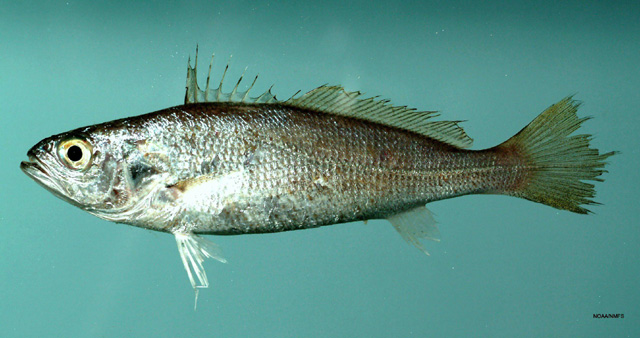| Sciaenidae (Drums or croakers) |
| 36 cm TL (male/unsexed); max. reported age: 1 years |
|
demersal; brackish; marine; depth range 2 - 18 m |
| Western Atlantic: Maryland to northeastern Florida in the USA and throughout Gulf of Mexico. Reported from Campeche Bank in Mexico (Ref. 5733). Often misidentified as Cynoscion regalis (Ref. 3702). |
|
Dorsal spines (total): 11-11; Dorsal soft rays (total): 26-31; Anal spines: 2-2; Anal soft rays: 8-11; Vertebrae: 27-27. Colour greyish above and changing abruptly to silvery below. Back and upper sides sometimes with very faint irregular rows of spots. Dorsal fin dusky, other fins pale to yellowish. Mouth large, oblique, lower jaw projecting. Upper jaw with a pair of large canine-like teeth at tip. Lower jaw with a row of sharp enlarged inner-row teeth, widely spaced. Chin without barbels or pores. Snout with 2 marginal pores. Gas bladder with a pair of straight, horn-like anterior appendages. Soft portion of dorsal fin covered with small scales on basal half of in (Ref 51721). |
| Occurs usually over sandy bottoms in inshore waters along beaches and in river mouths. Feeds mainly on crustaceans and fishes. |
|
Least Concern (LC); Date assessed: 15 October 2019 Ref. (130435)
|
| harmless |
Source and more info: www.fishbase.org. For personal, classroom, and other internal use only. Not for publication.
